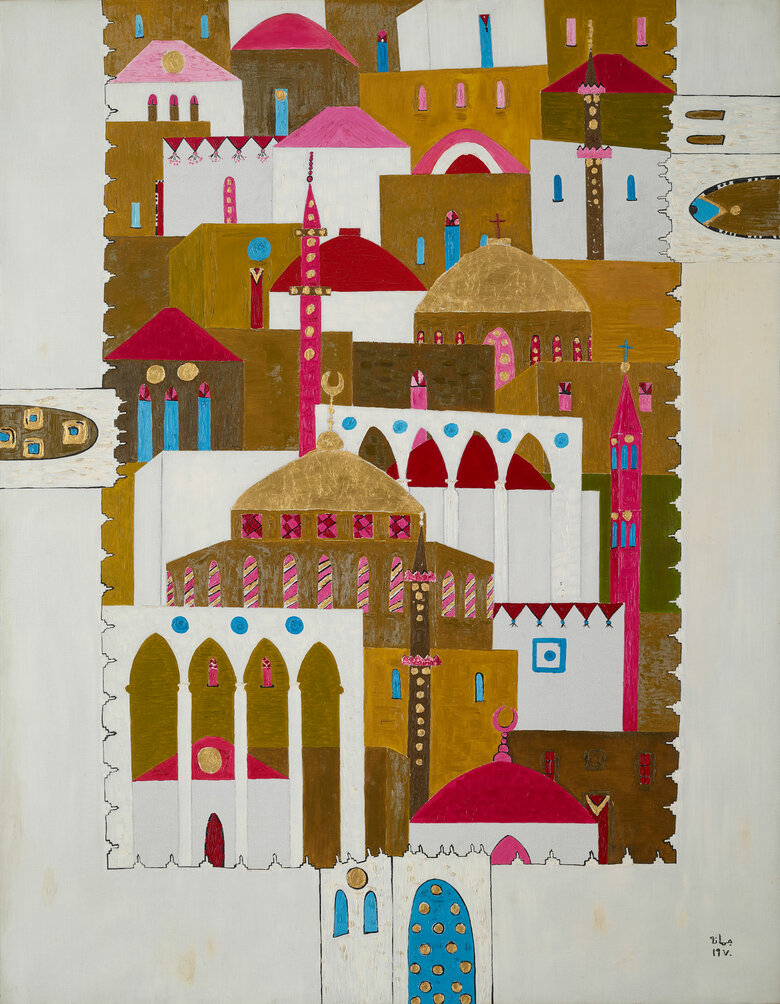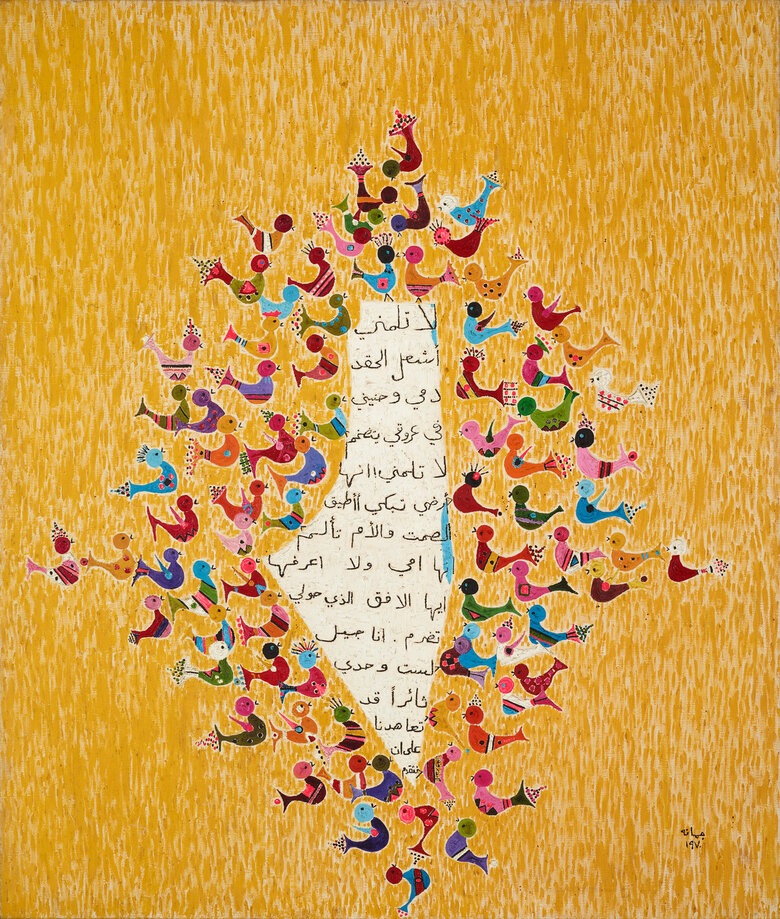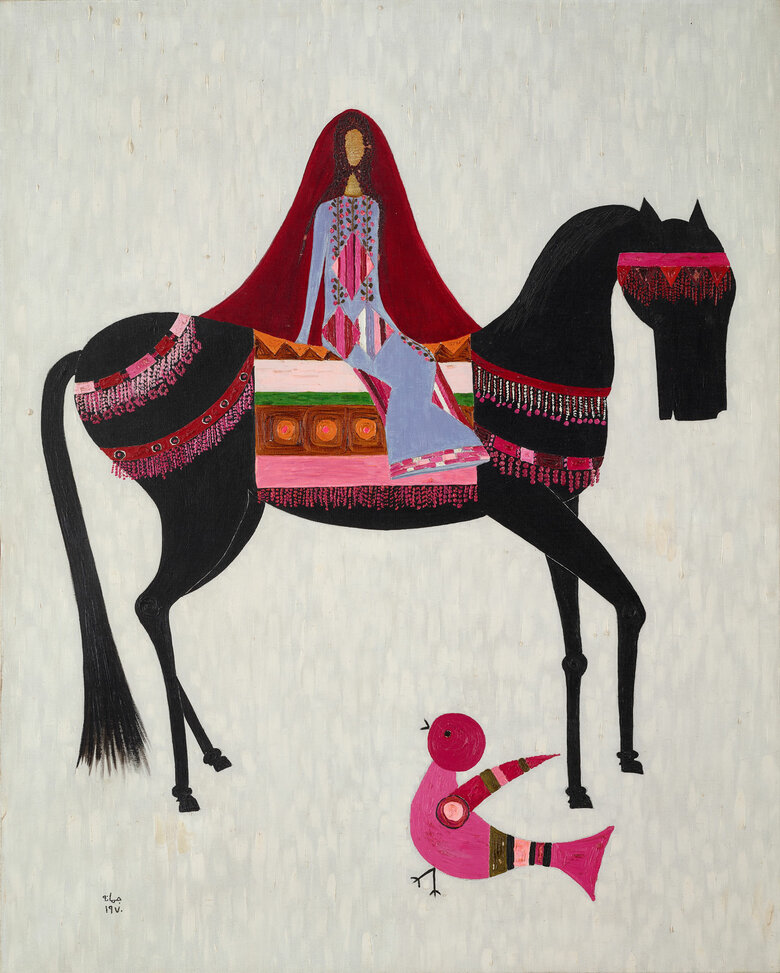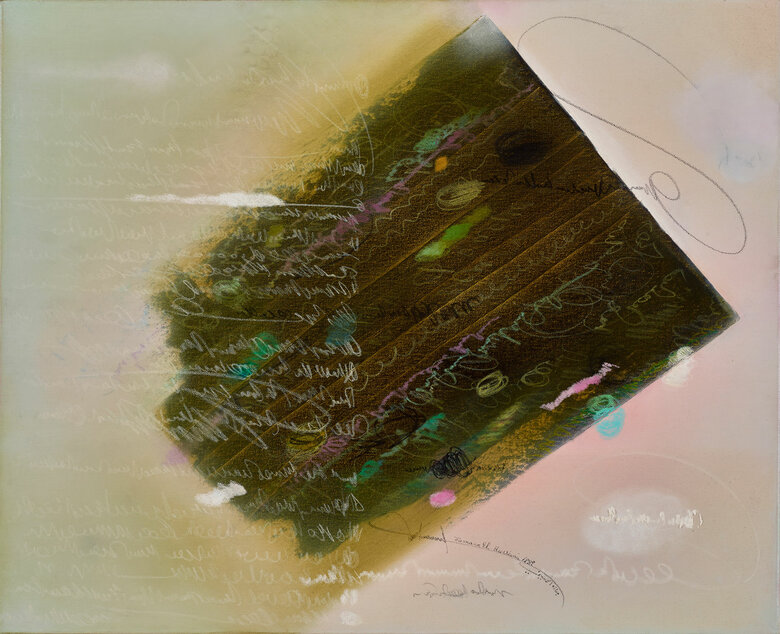Untitled, 1989 depicts an opened white letter paper against a pastel pink background. The letter is slightly skewed to the right, and appears folded in the lower register. Onto the letter, El Husseini registers black scribbles in multiple directions. Written from left to right, they resemble Arabic handwriting but remain unintelligible. Parts of the text are faded and a few lines are painted outside the letter’s frame. The artist splatters magenta-pink, olive-green and black paint blotches around the scribbles.
Except for the few lines mentioned above, the pink background is devoid of etchings. The saturation of the pink paint gradually decreases as we move our eyes from the right side of the painting to its left. While the letter’s right border is clearly demarcated with a sharp white line; the left part is kept is blurred, almost melting into the painting’s pale pink background.
Living in exile for almost all of her life, Palestinian artist Jumana El-Husseini has persistently expressed her longing for her homeland through her art. El-Husseini describes Untitled, 1989, as “letters to my dead mother” who is buried in Jerusalem and whose grave she cannot visit. As such, in Untitled, 1989, she addresses the homeland, loss and memory.
Untitled, 1989 poignantly expresses the artist’s desire to reconnect with the past, namely her deceased mother. The faded borders and unintelligible text allude to the passage of time and blurring of memories. The translucent layers give the painting a glass-like appearance, as if looking at an ancient text preserved in a museum. Moreover, Untitled, 1989, hints at the artist’s persistent connection to her homeland, reflected in her choice of an Arabic-like script.
Untitled, 1989, conveys a feeling of emotional turmoil. This is expressed through the distorted, drifting lines, the shifting tonality of the background, and the tilted letter placed nearly at the painting's central part, assuming its focal point. The outcome resembles a frantically written letter that emanates a sense of struggle. Moreover, the washed-out, almost wet appearance of the letter could suggest spilled tears. In contrast with its agitated character, however, Untitled, 1989, exudes an ethereal mood.
EL-Husseini’s elegant execution, pastel color palette, and mysterious text transform the letter from a straightforward instrument of communication, to an otherworldly message left to the viewer to decipher.
By creating a piece that is at once chaotic and mournful, El Husseini skillfully depicts the pain of exile. Imagining letters to her dead mother in Jerusalem, she creates a mystical bridge towards her past and her beloved city, one articulated by a cryptic language that incites contemplation.
Signed in Arabic and English and dated in English on the lower mid front ; Signed and dated in English on reverse
















